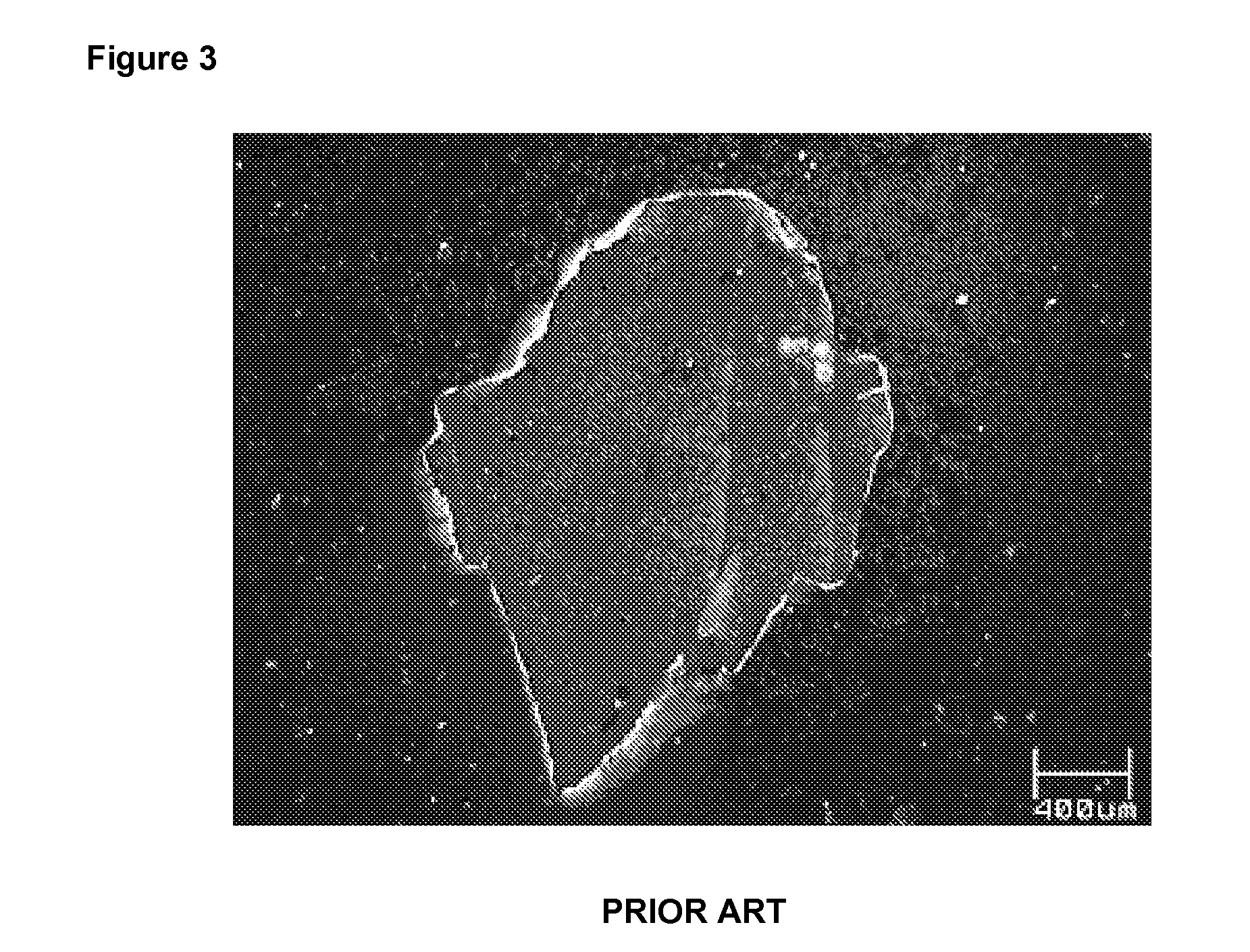Roofing Granules With Improved Surface Coating Coverage And Functionalities And Method For Producing Same
a technology of surface coating and roofing granules, which is applied in the direction of roofing, coatings, construction, etc., can solve the problems of affecting the inability of roofing granules to achieve high color saturation and intensity, and the appearance of “spotty” surfaces, etc., to achieve the effect of improving the encapsulation of time-released biocides, improving the resistance of roofing granules
- Summary
- Abstract
- Description
- Claims
- Application Information
AI Technical Summary
Benefits of technology
Problems solved by technology
Method used
Image
Examples
example 1
[0103] Roofing base granules (1 kg) with particle size between #10 and #40 U.S. mesh (commercially available from CertainTeed Corp, Piedmont, Mo.) were coated using air as suspending medium and 142 g of 100% white acrylic latex coating (PZ4600, 57 wt % solid from Pratt & Lambert, Cleveland, Ohio) diluted with 5% water in a fluidized bed coating process. The base granules were suspended in the air heated at 120 degrees C. and moved at a speed of 33 cubic feet per minute. The coating was deposited onto the granule surface by a spraying tip at the bottom of the fluidized bed chamber with a spraying pressure of 18 psi and pump rate of 7 gal / minute. The duration of coating deposition was about 1.5 minutes. The resultant granules had a very uniform coating appearance and white color appearance with L*=80.44, a*=1.2. b*=1.47 when measured by Hunter Lab colorimeter, as compared to the typical white roofing granules shown in FIG. 1 with Hunter Lab color reading of L*=63.49, a*=0.45, and b*=1...
example 2
[0105] Mineral particles with a flake-like shape were coated by using air as suspending medium in a fluidized bed coating process. The coating process of Example 1 was repeated, except that about 890 gm of crushed slate granules with particle size ranging from #10 to #50 US mesh (H15 slate granules commercially available from Carrieres des Lacs, Saint-Aubin-des-Landes, France) were coated with 175 gm of the 100% acrylic latex in a fluidized bed coater. The resultant granules had an excellent white appearance with L*=76.86, a*=−1.61, and b*=−1.85 as measured by Hunter Lab calorimeter (as compared with L*=63.49, a*=0.45, and b*=1.49 of the typical white roofing granules shown in FIG. 1). A sieve analysis conducted on the slate granules before and after the coating process showed no increase in particle size, indicating no agglomeration due to the coating process (FIG. 7). In addition, as shown in the micrograph of FIG. 8, the cross section of the resultant coated granules revealed a u...
example 3
[0106] Algae-resistant (AR) roofing granules manufactured by CertainTeed Corporation (Piedmont, Mo.) had a particle size range between #10 and #40 U.S. mesh and contained nominally 6% by weight of cuprous oxide were coated with a silicate solution. The AR granules (600 g) were loaded into a fluidized bed coater and suspended in warm air (80 degrees C.) inside the coater with air flow of 33 scfm. A white silicate binder solution was introduced into the coater under a pressure of 18 psi and pump rate of 10 gal / min, and atomized into tiny droplets which in turn were deposited onto the granule surfaces. The white silicate binder had a solids content of 35% by weight and consisted of sodium silicate, ball clay, white titanium oxide pigment and water. After 20 minutes, the AR granules were encapsulated with a uniform silicate layer which accounted for 15.8% by weight of the final AR granules. FIG. 13 depicts two AR granules fully encapsulated by an outer layer of silicate binder.
[0107] T...
PUM
| Property | Measurement | Unit |
|---|---|---|
| thickness | aaaaa | aaaaa |
| thickness | aaaaa | aaaaa |
| particle size | aaaaa | aaaaa |
Abstract
Description
Claims
Application Information
 Login to View More
Login to View More - R&D
- Intellectual Property
- Life Sciences
- Materials
- Tech Scout
- Unparalleled Data Quality
- Higher Quality Content
- 60% Fewer Hallucinations
Browse by: Latest US Patents, China's latest patents, Technical Efficacy Thesaurus, Application Domain, Technology Topic, Popular Technical Reports.
© 2025 PatSnap. All rights reserved.Legal|Privacy policy|Modern Slavery Act Transparency Statement|Sitemap|About US| Contact US: help@patsnap.com



